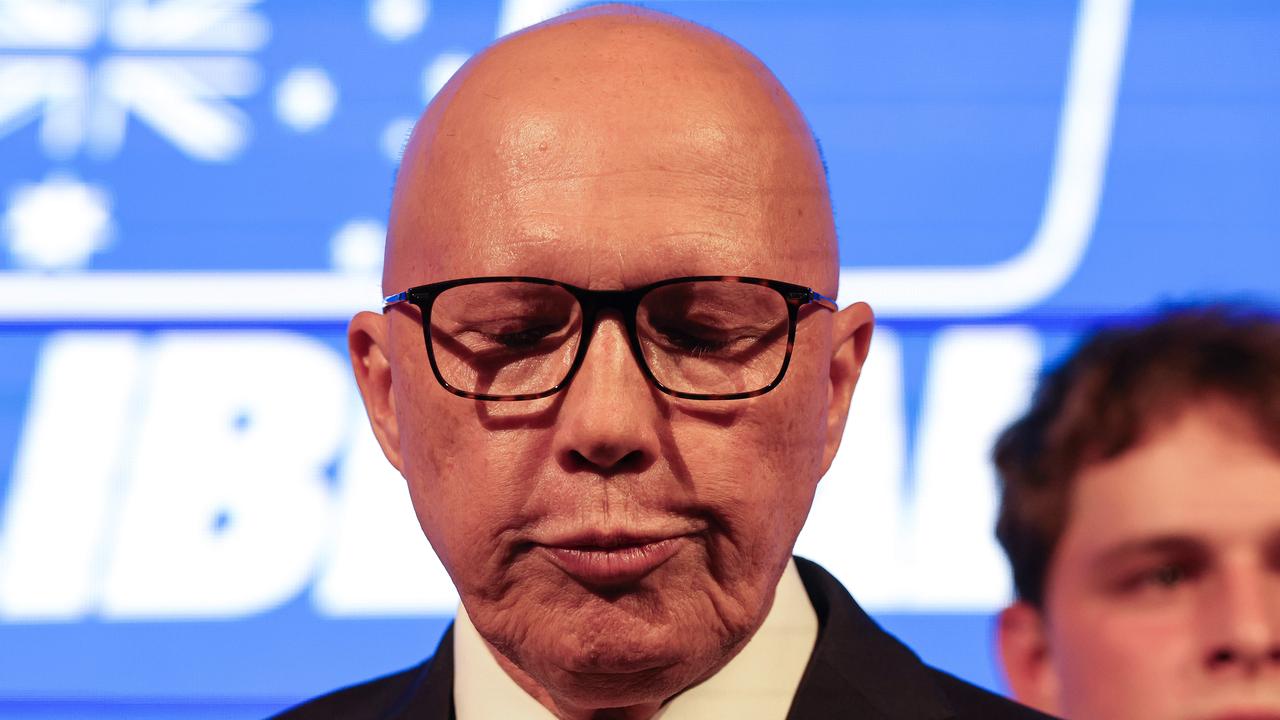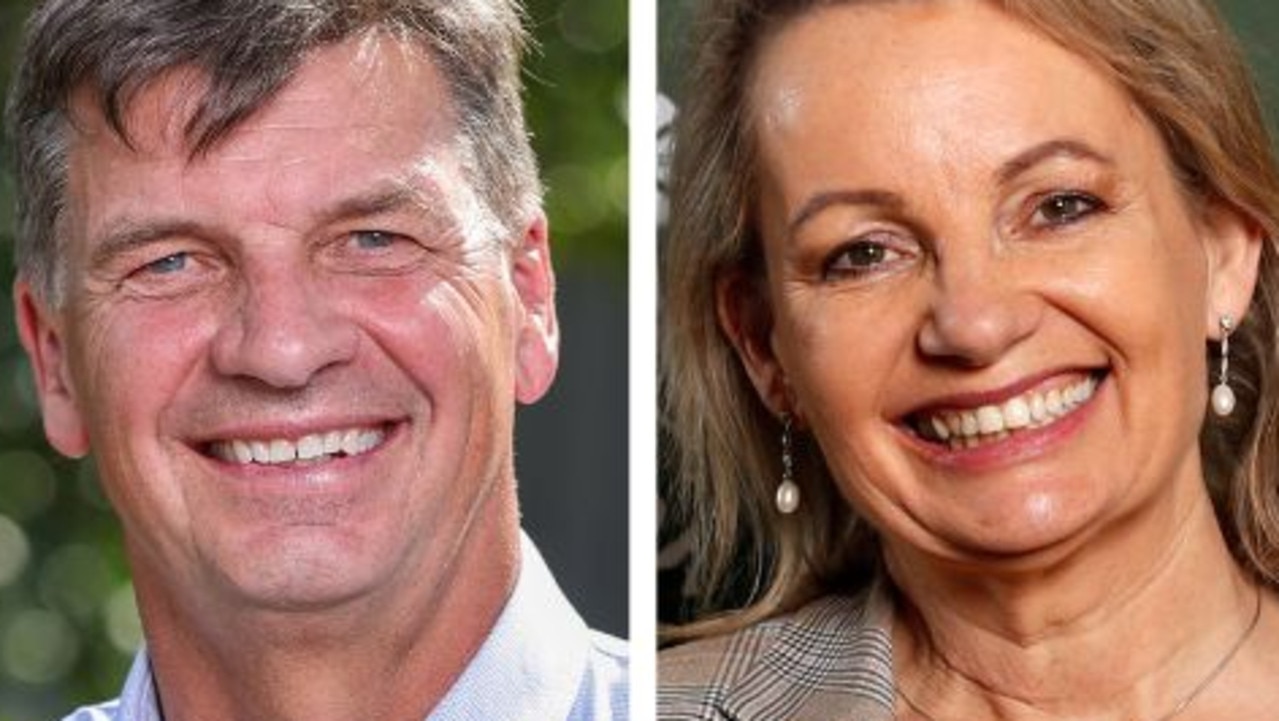Talking Point: At the crossroads — it’s our call
BRUCE MONTGOMERY: A Tasmania without class warfare or tourism gone mad is our responsibility, not government’s.

Opinion
Don't miss out on the headlines from Opinion. Followed categories will be added to My News.
IF you want a glimpse of Tasmania in the future, in the absence of a vision that we can all embrace, go to Coles Bay in the middle of summer and witness tourism gone haywire at the Wineglass Bay lookout.
Tourists, who average just three hours in Coles Bay when they visit, walk en masse up the paved track to the Saddle, take their selfies with the bay in the background, then retrace their steps to the carpark and drive out of town. How many of these 300,000 a year actually set foot on the beach?
Tasmanians who grew up exploring Freycinet, walking the tracks, staying in the shacks, have deserted the place. Their temple has been ransacked. Manufactured tourism has ruined Coles Bay. It’s our own version of Venice.
Tasmania is rapidly reaching a crossroad, a time when we, as a community, must draw a deep breath and assess just where in the modern world we fit.
We need a vision for Tasmania, a state in which we retain the original character and personality of the island while developing our own identity or brand without compromising our integrity.
A vision is not the responsibility of government; it is ours collectively. Governments are tools that we use to implement stages of our final vision. A politician’s focus is short-term: the next election. Yours and mine is broad. Without a plan, Tasmania is rudderless and confused at the bottom of the world. Can Tasmania paint its way out of what I believe is its identity dilemma to establish its place in the world?
And are Tasmanians aware that unless we address some serious social and developmental issues, the future could be a form of class warfare?
We might see ours as an egalitarian society. It is not. Nearly every social indicator points to a divided society of haves and have-nots, a privileged class that has thrived on the island being joined by relatively wealthy newcomers from interstate and overseas. Meanwhile, there is a growing underclass of those who have generational unemployment, poor health, poor educational achievement, enclaved housing and who are left with little hope for the future. They feel every right to be angry.
This had been the plight of the Tasmanian indigenous community since European settlement. It is now the plight of the white underclass in Tasmania. As a community, we need hope and we need inspiration. We need to know where we are going.
Politics should demand a cast of idealists, visionaries and philosophers, but they have no such focus.
Tasmania is rushing to catch up, trying to become relevant in a world into whose vortex this island has been drawn.
My counsel is for us to take a step back, consider the consequences of what we are trying to change and whether change is necessary at all.
Sixty years ago, when I came here, Tasmania was wary of newcomers, wary of anyone who did not conform.
Politics was dominated by working-class Labor, its roots in the mining unions. Launceston was both patrician and plebeian; the Brisbane St barons depended on the patricians out on the big properties, the plebeians on Trades Hall. Hobart was privileged: it was the centre of public administration; it had the only university.
We have a proportional representation voting system that only cephologists and apparatchiks understand. Today it delivers results the two major parties loathe, but it is the fairest reflection of the will of the people. Keep it, I say, but enlarge the House of Assembly to ensure merit in the choice of ministers.
It is true that in Tasmania it has mattered little which party is in government. Each backs private enterprise to take the last dollar from our natural resources and our natural environment. There is a persistent stench of secret deals that verge on corruption at worst and preferential treatment at best. All the while we are tearing at the fabric of our landscape and our brand.
The time rapidly approaches when Labor has to distinguish itself from the Liberals. Labor must take a stand on Tasmania’s future or it remains a mirror-image of the conservatives. We thought the revolution had begun with their 2018 election policy to end the obscene reliance on poker machines and the monopolies enjoyed by Federal Hotels. They piked.
We have a beautiful university campus in Hobart, there is room to move, room to expand, room to renew. It is close to the city, a bus ride away. The city of Hobart is becoming a nightmare for traffic and renters, so what are we doing? We are moving the university right into the city. This is madness.
The decision to sell the Treasury building in Hobart I find particularly difficult to bear. Initially, I thought it was just the Treasury building in Murray St, but no, it’s the whole of the block bounded by Murray, Macquarie, Davey streets and Franklin Square. This is the very heart of Tasmania’s colonial history — its courts and administration — and we are prepared to give it away.
On housing, we are told daily that prices are going through the roof as if it is the pinnacle of Tasmania’s ambition. At the same time, we are creating an underclass of people who will never own their own homes and even now cannot afford to rent. They are rightfully feeling ostracised. Meanwhile, we have a government that is alienating our wilderness areas to the benefit of private enterprise and in so doing tarnishes the very essence of wilderness. We are threatened with helicopters over the Wilderness World Heritage Area, helicopters over Freycinet and a cable car draped over our mountain.
To appreciate the landscape you have to immerse yourself in it. You derive the serenity and pleasure of it by making an effort. It’s a matter of anticipation, effort and reward. In the book The Rest of the World is Watching, Kevin Kiernan wrote that the original Lake Pedder, his temple, had been ransacked.
“I have loved many of the wild places it has been my good fortune to glimpse. But only at Lake Pedder did I feel somehow loved in return. The feeling flowed through me as I watched a sou’-west storm wreathe the summits of the Frankland Range with mist, which then turned gold with the setting sun. It flowed through me as I stood upon the sand of Maria Creek while beach and water reflected the moonlight back into the night.” No use of the adjectives “iconic” or “awesome” here. Kiernan is describing the spiritual effect of the Tasmanian landscape on those who know it better than anyone.
You cannot capture that by cable car. You have to make the effort, often considerable effort, to engage with our landscape and it always rewards you in the way that Kiernan so described.
Can we drain the new lake and recreate his vision? Of course, we can but it will take decades, centuries, millennia to be realised. What do we have to lose? It’s a vision.
But the creation of an overall vision for the state has to be in our minds, collectively, now. Where are we going?
Are we following the Pied Piper down a path of no return?
Hobart’s Bruce Montgomery is a former long-time Tasmanian correspondent for The Australian newspaper.


